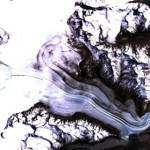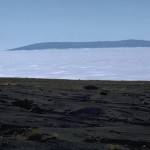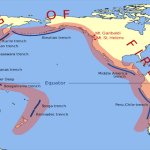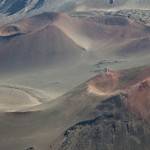Mount St.Helens Volcano
Mount St. Helens is found in Skamania County in Washington State and is one of the active stratovolcanoes of the world. Its location in Skamania County puts it 50 miles to the northeast of Portland and 96 miles to the south of Seattle. This volcano is part of the Cascade Range and during the current Holocene period, it has actually been the most active in this range. In addition to being the most active, scientists predict that it is the most likely to erupt of all of the volcanoes found in the United States. The volcano has an elevation of 8,363 feet and contains a horseshoe-shaped crater which developed during its most famous eruption in 1980.
Early History
Mount St. Helens has been active for around 275,000 years during which time it has experienced all sorts of volcanic activity ranging from quiet lava outpourings to violent explosive eruptions. During the previous few thousand years Mount St. Helens finally reached the elevation of 8363 feet (before had 9,677 feet) which made it the fifth tallest peak in Washington. It reached its current height after the eruption in 1980 due to an avalanche.
Volcanologists have divided the volcano’s activity into four stages: Ape Canyon (275 – 35 thousand years ago), Cougar (28 – 18 thousand years ago), Swift Creek (16 – 12.8 thousand years ago) and Spirit Lake (3.9 thousand years ago – present). Because each stage changes the composition of the volcano, destroying evidence of previous stages in the process, more is known about the more recent stages than the older ones.
Semi-Recent Eruptive Periods
The Sugar Bowl Eruptive Period took place between 850 and 900 and during this time, three lava domes developed on Mount St. Helens’ flanks. Despite these additions, there was no significant change to the volcano’s appearance during this period.
The Kalama Eruptive Period took place between 1479 and 1720 and this period is when Mount St. Helens achieved its pre-1980 height and form as around 1,600 feet of elevation were added to the volcano during this period. In the beginning of this period there were two large and explosive eruptions which took place in the years 1479 and 1482, a rare phenomenon as those dates are very close together. The early part of this period also produced many pyroclastic flows and lahars. The middle phase began around 1510 and during this point there were few lava flows but many pyroclastic flows. The Summit Dome grew during the late phase of the Kalama Period at Mount St. Helens and most likely took around 100 years to be created.
The Goat Rocks Eruptive Period at Mount St. Helens took place from 1800 to 1857 and this is when the Floating Island, a lava flow in 1801, was created. Scientists believe that the last significant eruption during this period (and in fact until 1980) took place in 1857 although there minor explosions in 1898, 1903 and 1921.
1980 Eruption
The eruption of Mount St. Helens in 1980 is probably the most well-known for this volcano. The first eruption in that group occurred on March 27th and was the first in more than 100 years. Eruptions continued, occurring about once an hour during March and going down to about once a day by the 22nd of April. Eruptions then paused until May 7th at which point small eruptions occurred until the 17th. Mount St. Helens had experienced over 10,000 earthquakes, causing the north flank to grow about 250 feet. This bulge kept growing, indicating a pool of magma that would erupt in the future.
The magnitude 5.1 earthquake mentioned above occurred on May 18th at which point both the summit and the northern bulge became a large landslide. This was in fact the largest avalanche of debris ever recorded in Earth’s history with a total volume of around 3.3 billion cubic yards. The landslide removed the northern flank of Mount St. Helens which in turn triggered a huge lateral blast of hot debris that traveled at around 300 miles per hour. The change in pressure caused a 9 hour long eruption that included a tall eruption column as well as many pyroclastic flows and a great deal of ash fall. The eruption also created lahars (volcanic mudflows) when the snow and ice that had topped the volcano melted and mixed with the volcanic debris.
Mount St. Helens - Future Eruptions
Although this volcano is the most likely one in the Cascades to erupt again within our lifetime, experts do not believe it will be as damaging as the eruption of 1980. They do not think that a lateral blast or such a large avalanche of debris is likely. The main hazards for renewed activity on the volcano are lahars, explosive eruptions causing pyroclastic flows and a continuation of the growth of the lava-dome. Because scientists are not able to predict the next eruption very far in advance, they are keeping close tabs on the volcano using a wide range of geological equipment.




